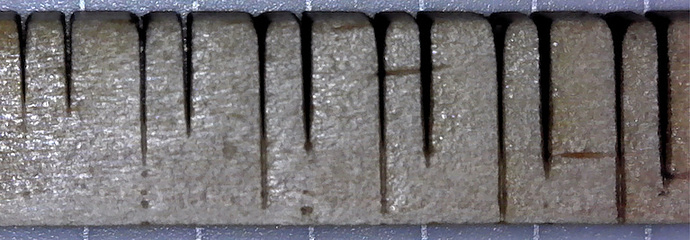I’m not really clear on when you should use a double pass (or triple) and what the befits to it are.
That would depend on the material you are using and the issues you are having.
I haven’t needed to use more than a single pass in ~30 months of ownership. I’ve cut material up to 10mm/.39".
I’m not really having issues. I simply don’t know what the feature is for. I understand what it does. I just don’t know when it would be used.
It’s highly situational. In some cases it can be more reliable, in others or can reduce kerf, in others still it can limit smoke or flame.
In engraving it can make a deeper engrave than is possible in one pass.
In the case of very thick materials you can use it to change the focus height between passes, sometimes giving better cut performance.
Sometimes if you’re cutting and engraving the same piece you can run one light pass or the cut, remove the masking from the cut shape and then proceed with the engrave on unmasked material, finally finishing with a cut on the same path as the first step.
And this is really just the beginning. Some materials don’t like a lot of heat at any one time, multiple light passes can lead to better results, etc etc. It’s not really possible to list all the edge cases.
Like I said, situational. 
Let me explain by use of an example: I cut a lot of Adams foam board. When laser cut, the foam board tends to have the foam core drawback. This is not all negative until it gets excessive. Cutting it in a single pass gives that extreme drawback. I’ve developed speeds and power (lower power and fast speeds) so that it cuts through in three passes with minimal foam drawback.
Another example is cutting wood that is thicker than what we really should be cutting. You can get a cleaner cut by cutting partway through and then manually adjusting the focus and cutting the rest of the way through.
The other Evans illustrates two of the cases that I listed:
Great example of “Some materials don’t like a lot of heat at any one time”
A nice clean example of “In the case of very thick materials”.
I also thought of another example of a material that often doesn’t love a lot of heat at once: leather. it can get “crispy” corners if you hit it too hard. Multiple passes can help with that.
In the case of thicker wood.
you can’t use the automatic number of passes feature then can you? It does two passes with the same settings?
For the 2nd pass, how do you determine the focal length? You don’t know how deep the first cut went?
You test first.
Here’s an example of how focus height can change the cut (end view of 3/8" maple which is actually .39"). Each of these pairs of cuts are at the same speed, but the right cut is focused on the surface, the left (deeper) one is focused at 1/2 that height:

These are all single pass.
Resetting the focus height I have not done much, but a lighter pass to have less char, and making several cuts is common enough, conversely for many woods the wood can get harder if cooked so a second pass right after the first pass will cut deeper in that case than waiting for 20 min or so.
No, this would be two individual passes.
Correct, but a guess is still better than focusing on the surface. I normally use half the thickness.
Example for 3, even 4 passes may be best way for cutting thick (3/8" or so) acrylic to avoid too much heat (flame) that can when you try to slow down the speed–so often you have less mess and flaming risk by keeping the speed higher but multiple passes–and this is also true on thick leather, too.
I have used multiple passes at a lower power to cut through cardboard (single layer corrugated Amazon packing boxes) with less smoke. Corrugated cardboard has a greater change of flames because there is a layer of air in the middle. I managed to cut the card in one pass, but I was getting a lot of smoke. So I switched to using a faster speed & lower power on three passes – one to cut through the top part, one cuts through the middle ripples and scores the bottom, third pass to go through the bottom. For the Amazon packing boxes, I find I don’t need to change the focus on each pass. Keep a careful eye on corrugated cardboard, though – I haven’t had it, but there are posts on the forum about real live flames 
This topic was automatically closed 32 days after the last reply. New replies are no longer allowed.